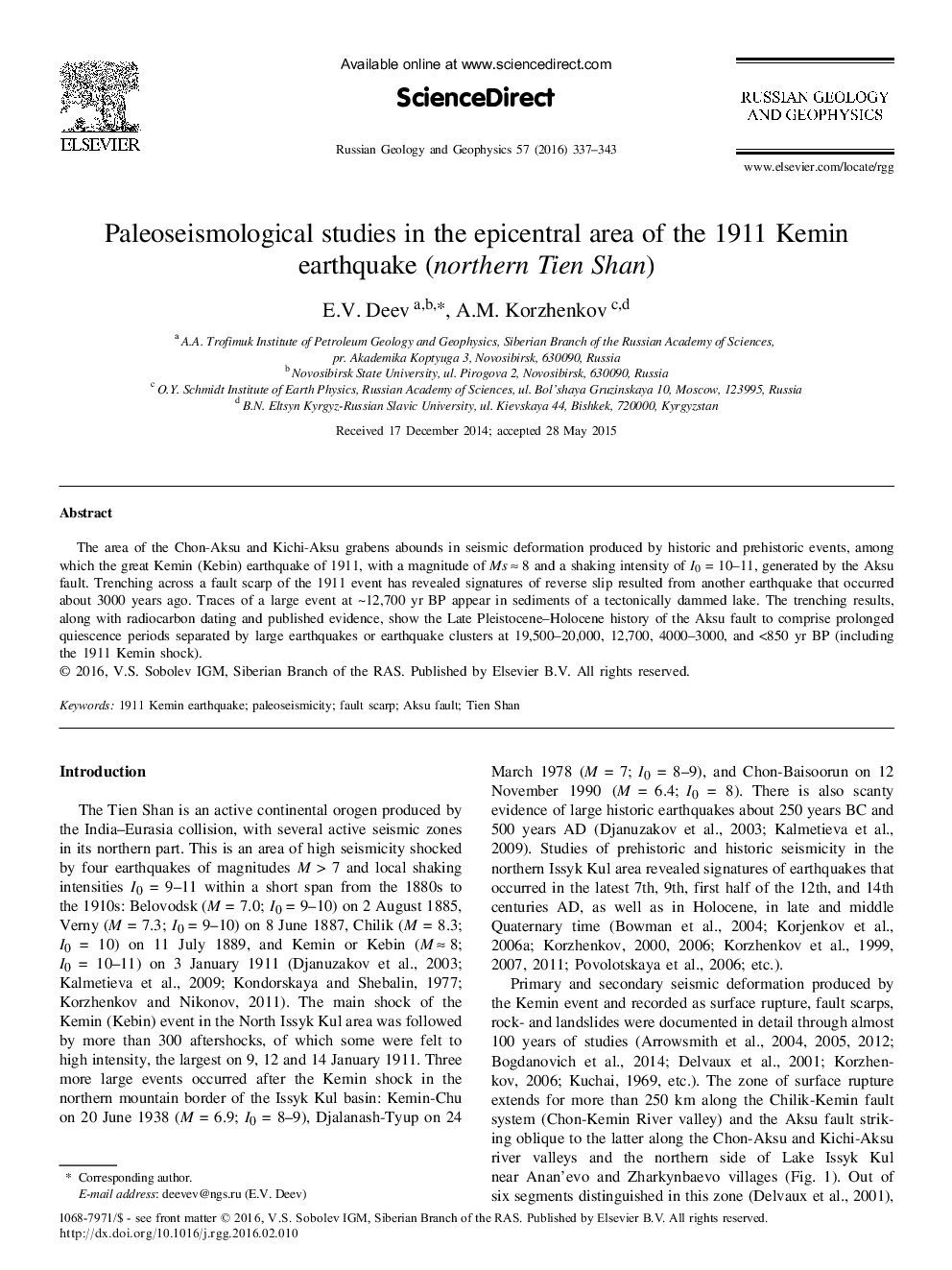| Article ID | Journal | Published Year | Pages | File Type |
|---|---|---|---|---|
| 4738419 | Russian Geology and Geophysics | 2016 | 7 Pages |
The area of the Chon-Aksu and Kichi-Aksu grabens abounds in seismic deformation produced by historic and prehistoric events, among which the great Kemin (Kebin) earthquake of 1911, with a magnitude of Ms - 8 and a shaking intensity of I0 = 10–11, generated by the Aksu fault. Trenching across a fault scarp of the 1911 event has revealed signatures of reverse slip resulted from another earthquake that occurred about 3000 years ago. Traces of a large event at ~ 12,700 yr BP appear in sediments of a tectonically dammed lake. The trenching results, along with radiocarbon dating and published evidence, show the Late Pleistocene-Holocene history of the Aksu fault to comprise prolonged quiescence periods separated by large earthquakes or earthquake clusters at 19,500-20,000, 12,700, 4000–3000, and < 850 yr BP (including the 1911 Kemin shock).
